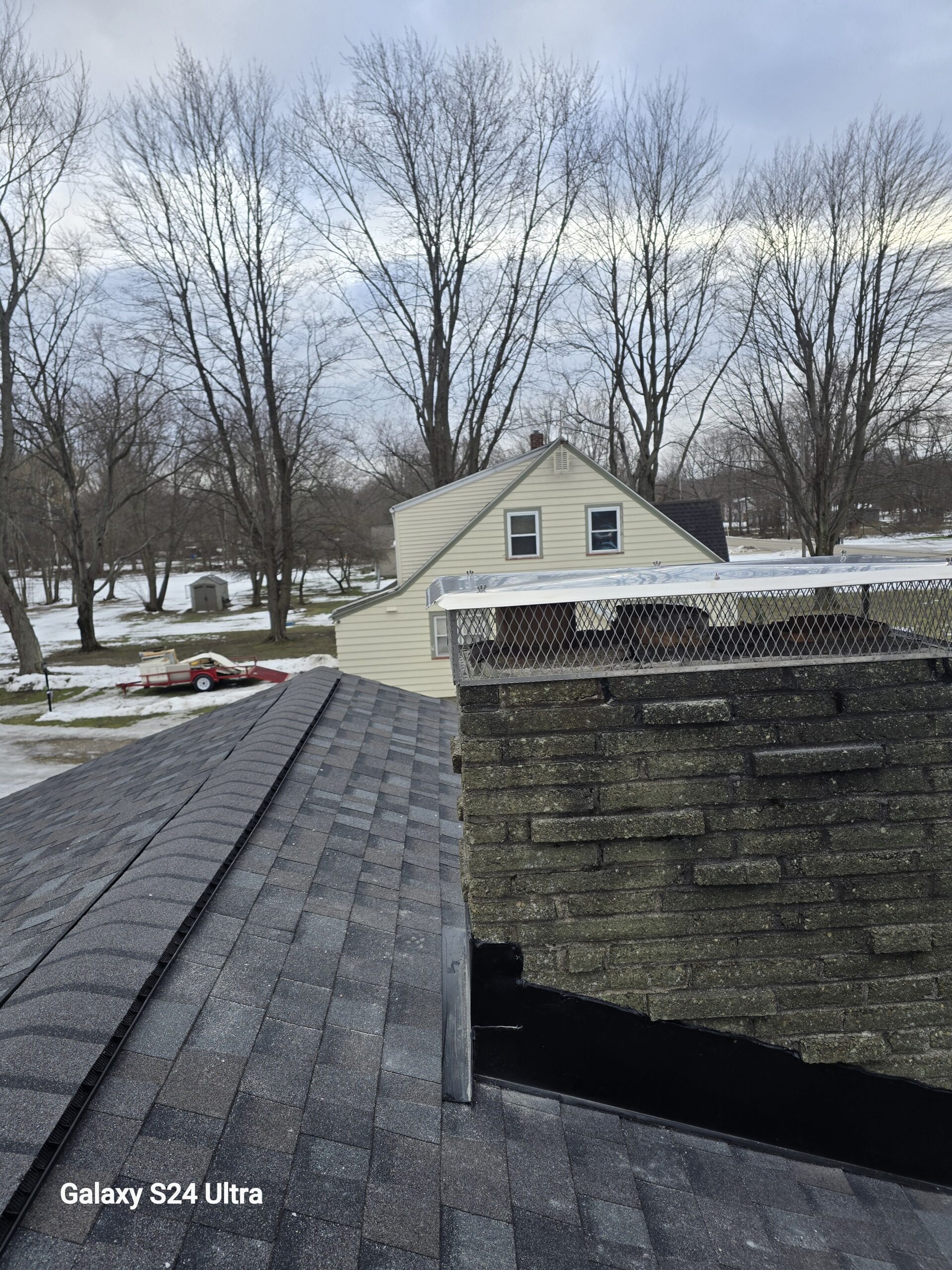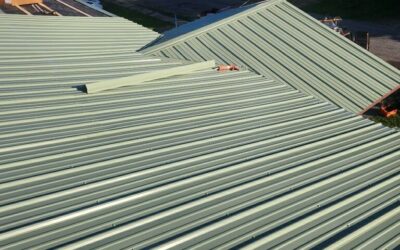The 8-Step Process to Replace Your Roof: A Comprehensive Guide
Replacing a roof is a major home improvement project that requires careful planning, skill, and attention to detail. Whether you’re replacing a damaged roof or upgrading your existing one, understanding the process is key to ensuring that your new roof will be installed properly, effectively protect your home, and last for many years. At S&K Construction and Remodeling LLC, we specialize in providing top-tier roofing services in Northeast Ohio, including areas like Cleveland, Lakewood, Medina, and Chagrin Falls. In this blog, we’ll walk you through the 8-step process to replace your roof, ensuring that you understand every stage of the installation and what to expect during the roof replacement process.
Step 1: Roofing Materials Get Delivered to Your Home
The first step in the roof replacement process is the delivery of roofing materials. Before any work begins, the materials needed for your roof replacement are ordered and delivered to your home. This includes shingles, underlayment, flashing, nails, and any additional components required for your specific roof design.
During this stage, your roofing contractor will take note of the specific materials you’ve selected, such as asphalt shingles, metal roofing, or slate tiles, and make sure everything is on-site before starting the work. It’s essential that all materials are delivered in good condition to avoid delays or unexpected issues during the installation process.
In addition, a staging area will be designated on your property where the materials will be stored. It’s important that the delivery and staging areas are clear of obstacles, so your contractor can access the materials quickly and efficiently.
Step 2: Initial Walkthrough and Set-Up
Once the materials are delivered, the next step is an initial walkthrough and setup. This is when the roofing contractor and team will inspect the roof’s current condition and assess the scope of the project. They will discuss your specific needs, expectations, and any potential challenges related to the roof replacement.
During this walkthrough, your contractor will also explain the timeline for the project and go over any details related to the type of roofing materials, ventilation, and insulation. You’ll have the opportunity to ask any questions and ensure you’re on the same page about the roof replacement process.
This step also involves setting up the necessary equipment, including ladders, scaffolding, and any tools required for the job. The contractor will also confirm the work schedule, so you know when to expect work to begin and when the project will be completed.
Step 3: Precautions Are Set Up to Protect Your Property
Roof replacement is a messy job, and it’s essential to take precautions to protect your property from debris, nails, and falling materials. Before tearing off the old roof, the roofing team will take steps to minimize the impact of the work on your property.
This includes:
- Covering landscaping: Tarps or protective sheets are placed over bushes, plants, and flower beds to protect them from falling debris.
- Placing a debris barrier: A large tarp or netting is typically installed around the perimeter of your home to catch falling debris and prevent damage to your driveway, lawn, or nearby structures.
- Setting up safety measures: Safety is a priority during roof replacement. The crew will wear protective gear, such as harnesses and helmets, and make sure all equipment is properly secured. Additionally, safety signs and warning tape are often placed around the worksite to keep pets, children, and guests away from the area.
By setting up these precautions, your contractor helps ensure a safer, more efficient roof replacement process while protecting your home and surrounding property.
Step 4: Tearing Off Your Roof
With the materials delivered, the setup complete, and precautions in place, it’s time to start tearing off your old roof. This is a crucial step in the roof replacement process, as it removes the layers of shingles and underlayment that may have been damaged or worn over time.
Tearing off the roof typically begins by removing the existing shingles, flashing, and underlayment. This step can be noisy and messy, but it’s an essential part of the process to ensure that your new roof is installed on a clean, solid surface.
During this phase, the roofing crew will also inspect the roof decking (the wooden structure beneath the shingles) for any signs of damage, rot, or deterioration. If any issues are found, they will need to be addressed before proceeding with the installation of your new roof. This could involve replacing or repairing the decking, which brings us to the next step.
Step 5: Replacing Compromised or Rotten Roof Decking
After the old roof is removed, the next step is to inspect the roof decking for any signs of damage. Over time, the roof decking can become compromised due to water leaks, rot, or age. If the decking is in poor condition, it must be replaced before your new roof is installed.
Replacing compromised decking typically involves removing the damaged sections and replacing them with new plywood or oriented strand board (OSB). The contractor will ensure that the new decking is properly installed, level, and securely fastened. This step is crucial to maintaining the structural integrity of your roof and ensuring that your new roof will be properly supported.
The time it takes to replace damaged decking will depend on the extent of the damage. In some cases, only a few sections may need replacement, while in others, a larger portion of the decking may need to be replaced.
Step 6: Your New Roof Is Installed
With the old roofing material removed and any damaged decking replaced, the next step is installing your new roof. The roofing materials you’ve chosen—whether asphalt shingles, metal roofing, or another material—will now be installed according to the manufacturer’s specifications.
For asphalt shingles, the installation typically follows these steps:
- Installing the underlayment: A layer of protective underlayment is installed over the roof decking to provide an additional barrier against water infiltration. This could be synthetic underlayment, felt paper, or a specialized waterproofing membrane.
- Installing shingles: The new shingles are installed, starting at the bottom of the roof and working upward. Each shingle is carefully aligned, nailed into place, and sealed with roofing cement or adhesive to prevent water from seeping through the joints. Shingles are installed row by row, overlapping each other for maximum protection.
- Flashing installation: Flashing is installed around the edges of the roof, including around chimneys, skylights, vents, and valleys. Flashing ensures that water doesn’t seep into the joints or seams of the roof.
- Ridge vent installation: Finally, a ridge vent is often installed at the peak of the roof to improve ventilation and prevent moisture buildup in the attic.
For metal roofing or slate tiles, the installation process may vary slightly, but the general steps of applying underlayment, flashing, and securing the materials will be the same.
By the end of this step, your new roof will be fully installed, and your home will be protected from the elements once again.
Step 7: Cleaning Up After Your Roof Replacement Is Complete
Once the new roof is installed, cleaning up the worksite is the next crucial step. Roof replacement generates a significant amount of debris, including old shingles, nails, and other materials. The contractor will thoroughly clean the area to ensure that no debris is left behind.
Cleaning up includes:
- Removing debris: The roofing crew will remove all discarded shingles, wood, nails, and any other materials from your property. They may use a heavy-duty magnetic sweeper to collect nails and metal debris to prevent damage to your driveway or lawn.
- Disposing of old roofing materials: The contractor will ensure that the old roofing materials are properly disposed of, either by taking them to a local landfill or recycling facility.
- Final inspection: After the cleanup, the roofing contractor will perform a final inspection to ensure that no debris is left on your property, and everything has been properly disposed of.
This thorough cleanup process helps ensure that your home and property are left looking as good as they did before the work began, with no leftover debris or hazards to worry about.
Step 8: Final Inspection and Walkthrough
The final step in the roof replacement process is the inspection and walkthrough. Once the roof is fully installed and cleaned up, the contractor will conduct a final inspection of the roof to ensure that everything has been done according to plan.
During the inspection, the contractor will check for:
- Proper installation of shingles or other roofing materials
- The correct installation of flashing, ridge vents, and other components
- Proper alignment and levelness of the roof
Following the inspection, the contractor will walk you through the work, explaining any details and answering any questions you may have. They will also go over the warranty information for your new roof and provide any maintenance recommendations to ensure the longevity and performance of your new roof.
Conclusion
Replacing a roof is a major project, but with the right process in place, it can be a smooth and stress-free experience. The 8-step process outlined above—starting with material delivery and ending with a final inspection—ensures that your roof replacement is completed efficiently, safely, and with minimal disruption to your daily life.
At S&K Construction and Remodeling LLC, we are committed to providing high-quality roofing services to homeowners in Northeast Ohio, including Cleveland, Lakewood, Medina, and Chagrin Falls. If you’re ready to replace your roof, we can guide you through every step of the process and ensure your new roof is installed to the highest standards. Contact us today for a consultation!
 (440) 307-2060
(440) 307-2060


